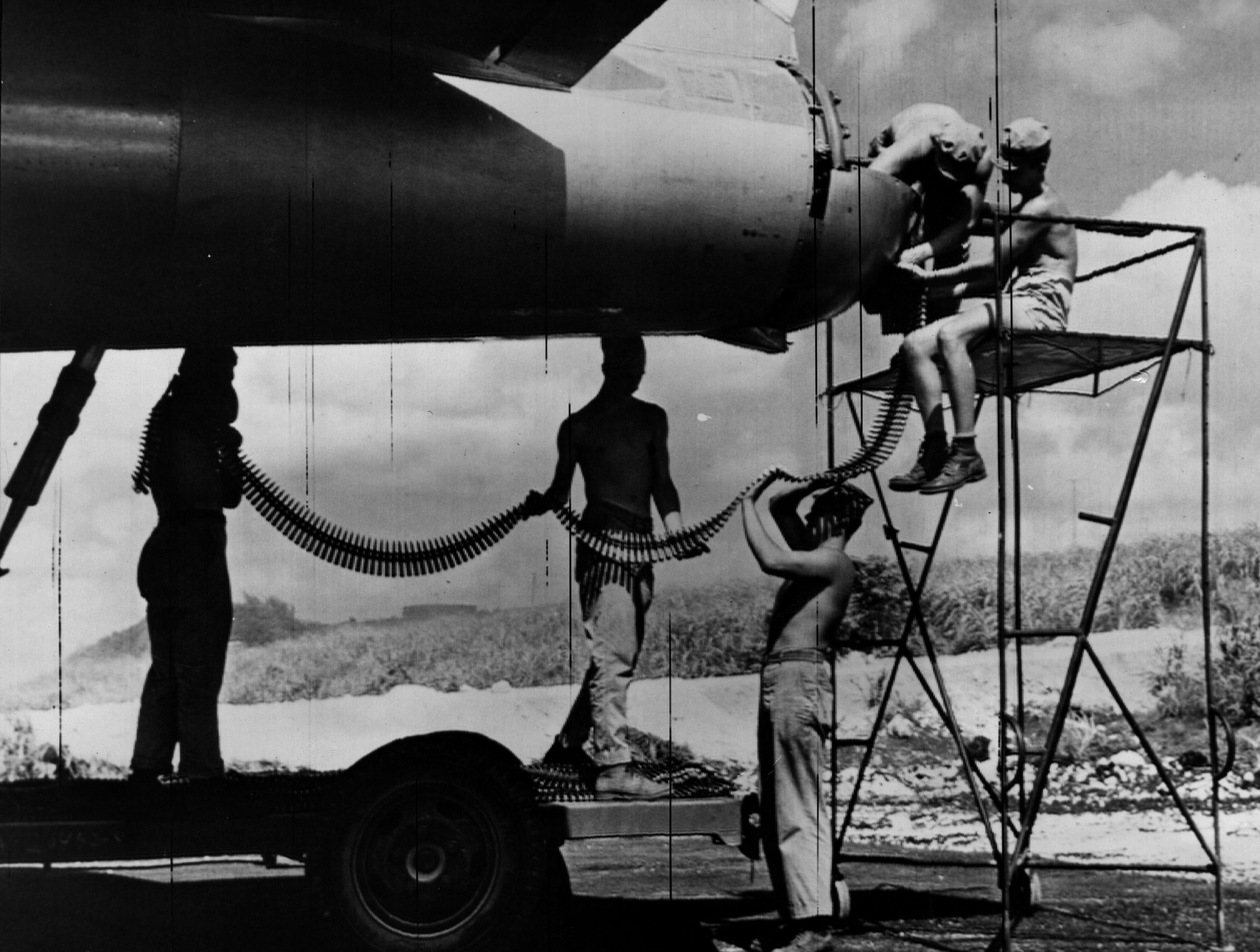The “whole nine yards.” A simple, oft-used phrase whose origins have stumped internet sleuths and etymologists alike for decades.
Perhaps no phrase has frustrated lexicographers more, with political and language columnist William Safire writing in the New York Times in 1982, that it was “one of the great etymological mysteries of our time.”
Theories of its origins abound — from sails on a ship being fully set, to the amount of cloth in a queen’s bridal train, to the somewhat bawdy belief that it came from a certain well-endowed Scotsman who got his kilt caught in a door.
But perhaps one of the most popular urban legends is that the expression cropped up during World War II. The standard U.S. aircraft machine gun ammo belt was 27 feet long or — you guessed it — nine yards. When a gunner exhausted his ammunition, it was said that he had shot off the whole nine yards at the enemy.
Years and a lot of fruitless microfilm searches later, perhaps the closest etymologists have come to the idiom’s origins is a 1912 reference to “the whole six yards” in the Kentucky newspaper Mount Vernon Signal:
“But there is one thing sure, we dems would never have known that there was such crookedness in the Rebublican [sic] party if Ted and Taft had not got crossed at each other. Just wait boys until the fix gets to a fever heat and they will tell the whole six yards.”
The newspaper makes another reference in the June 28, 1912, issue: “As we have been gone for a few days and failed to get all the news for this issue we will give you the whole six yards in our next.”
While the ammunition belt theory briefly held water, linguists are now chalking up the whole debacle to phrase inflation, meaning “expressions that use a number meant to be impressive, that number is likely to grow over time.”
“The existence of a six-yard variant shows pretty clearly that this is not about yards of anything,” Jesse Sheidlower, the editor at large of the Oxford English Dictionary, told the Times. “It’s just a random number.”
Be that as it may, this WWII-enthusiast prefers to link the expression’s origins to the ammunition belt rather than to some obscure Kentuckian lingo.
Besides, like Geoff Nunberg writes for NPR, the “profusion of possibilities is the key to the idiom’s appeal. If ‘the whole nine yards’ had a definitive completion… it would never have caught on in the first place. It’s like a line of poetry; it resonates without resolving.”





